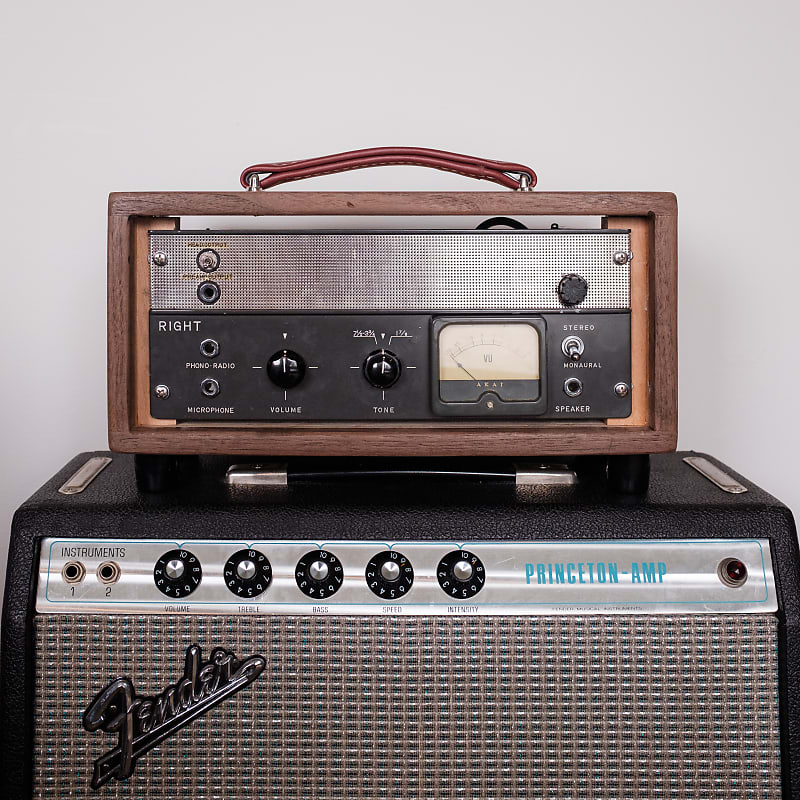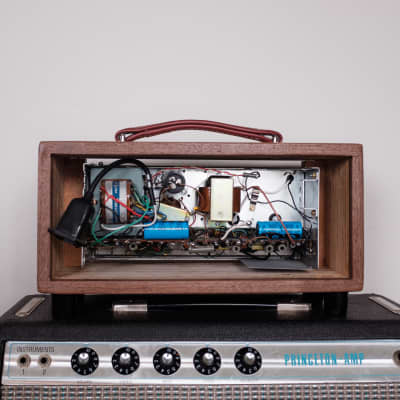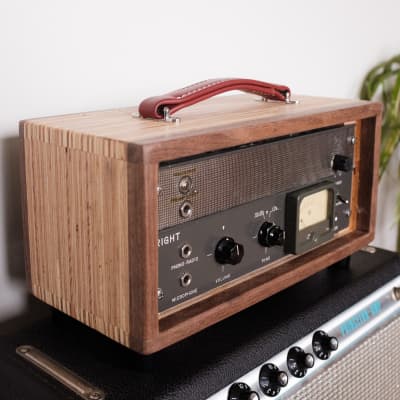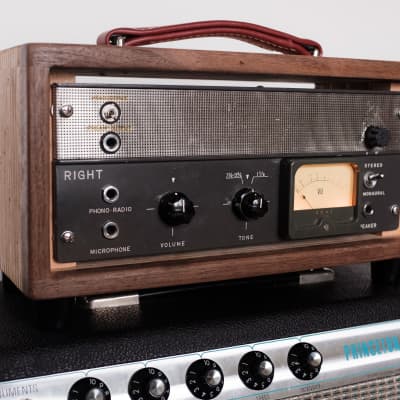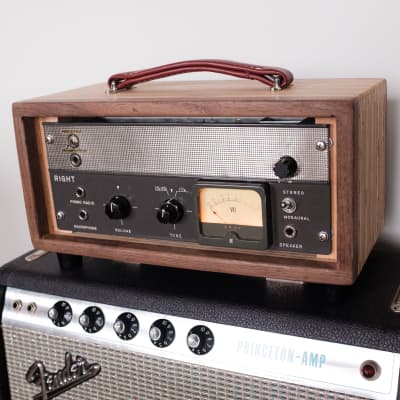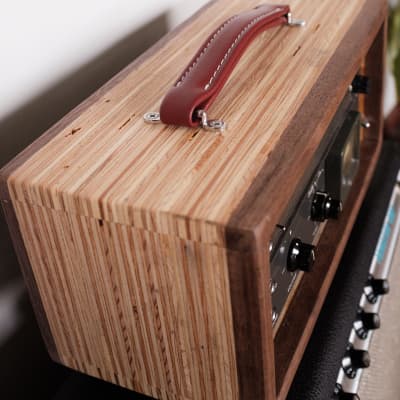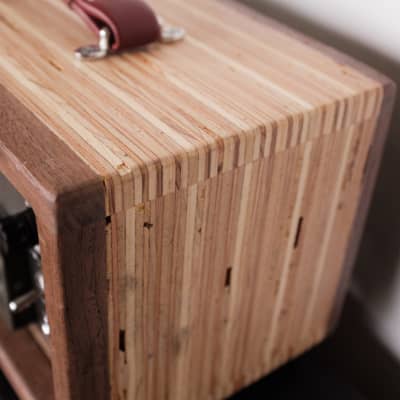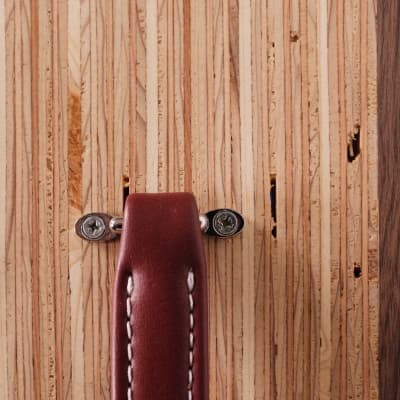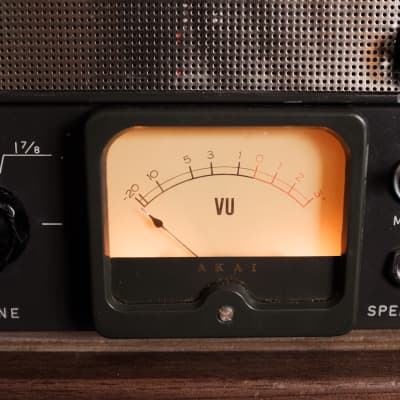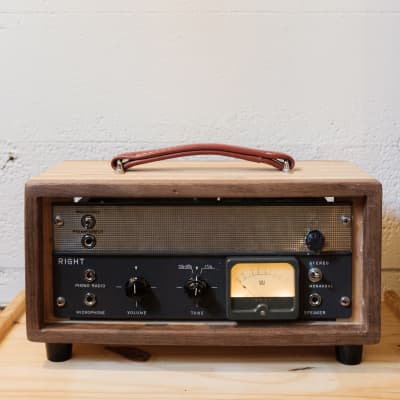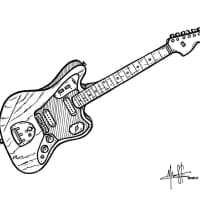This amp was designed and constructed using the basic foundation of a 1960s era Akai / Roberts reel to reel tape recorder. Where practical and beneficial, the original components were used/reused.
There are 2 instruments inputs which share the common volume and tone controls. The 2 inputs however employ separate and different input stage tubes and therefore sound very different. The top input is for the EF86 (6267) tube input stage. These tubes were used in 1960s vintage VOX amps, some Dr. Z amps and other boutique amplifiers. The lower input is for a 12ax7 (12AD7) tube input stage. 12ax7s (12AD7s) are the most common input tubes in guitar amplifiers such as Fender, Mesa Boogie, and Marshall amps.
The output stage is a single-ended class A power amp. This amp uses an EL84 (6BQ5). Single-ended class A amps were used in many lower power 1950s-60s Fender Tweed and Blackface amps and in Vox's AC-4, which also used the EL84 (6BQ5) tube. The amp uses a 6X4 tube rectifier. All tubes except for the 6x4 rectifier are the original vintage tubes. The replacement tube is a vintage RCA 6x4.
Above the inputs is a toggle boost switch and a line output. The line out is useful to drive a second amp, a speaker-driven reverb, or send signal to other studio equipment. The effect of the boost switch is an increase in the gain of the center stage of the amplifier. When the amp is powered-up with this switch in the down (off) position a quick pop may be heard when the switch is initially turned on. This will generally not occur if the switch is in the up (on) position when the amp is turned on, but it may.
The volume control is located to the right of the input jacks. Unlike most guitar amps which get very loud with the slightest turn of the volume control, this one is designed to make use of a larger amount of its rotation, especially with the boost switch in the down (off) position.
The tone controls are concentric pots, the outer ring is the bass control and the center knob is for adjusting the treble response. The tone circuit uses a modified passive Baxandall/James circuit (Bass and Treble controls) similar to the type of tone stacks used in the original Ampeg, Orange, and some Dr. Z amps. These controls are designed to provide an extremely large range of tonal adjustment. You will find that they also significantly interact with the boost switch and the volume control, providing the ability to create a large range of tonal profiles. Play around with them as well as with your guitar volume and tone controls, use the full range of the controls, there are no sacred settings, even full up or full down have their places.
The tone settings will also affect the point at which the amp starts to overdrive. Harshness, especially at higher gain settings, can usually be reduced by decreasing the treble or bass tone.
The enclosure is a custom wood enclosure with rubber feet and a leather handle. This enclosure doesn't have a back panel, so use caution when plugging in the power chord, and avoid putting hands back there when the amp is on, as those large blue capacitors can store high voltages. Some of the wood on the enclosure has chipped away, but it is sturdy and lightweight.
The VU meter on this unit is non-functioning, but serves as a pilot light when the amp is switched on. You could easily swap the VU meter for a working Akai M7 or M8 meter if you manage to find one on eBay that works.
The amp is designed to drive an 8ohm speaker load, and must have a connected speaker at all times when operating the amp. This amp utilizes a 1/2 amp slo-blo fuse.
Message if you have any further questions, thanks!
